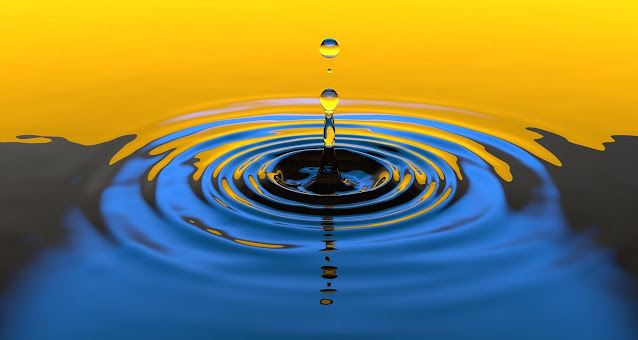A new study shows that Quark-Gluon Plasma can basically flow like water
 |
| Credits: CERN/Henning Weber |
Quark-Gluon Plasma is a state of matter which constitutes quarks and gluons, it forms at very high temperatures, reaching trillions of degrees, million times hotter than the center of the sun. At those temperatures, quarks and gluons break free from the nucleons and form a very dense form of matter. It is thought to be present shortly after the Big bang, which then cooled down in microseconds to form stable particles.
The viscosity and density of quark-gluon plasma are about 16 orders of magnitude larger than water, and a new study finds the ratio between the viscosity and density of quark-gluon plasma is similar to that of water. The study was published on SciPost.
The flow of a liquid depends on its viscosity and density, and as the ratio of viscosity and density of quark-gluon plasma is close to ordinary liquids, it means that quark-gluon plasma will flow like ordinary liquids. That the particles move in the same way as water.
Professor Kostya Trachenko, Professor of Physics at Queen Mary University of London and author of the recent paper, said: "We do not fully understand the origin of this striking similarity yet but we think it could be related to the fundamental physical constants which set both the universal lower limit of viscosity for both ordinary liquids and quark-gluon plasma."
“It is conceivable that the current result can provide us with a better understanding of the quark-gluon plasma,” said Professor Vadim Brazhkin, a researcher at the Universidad Autónoma de Madrid.
"It is conceivable that the current result can provide us with a better understanding of the quark-gluon plasma," added Professor Vadim Brazhkin from the Russian Academy of Sciences. "The reason is that viscosity in liquids at their minimum corresponds to a very particular regime of liquid dynamics which we understood only recently. The similarity with the QGP suggests that particles in this exotic system move in the same way as in tap water."
Refrence: DOI: 10.21468/SciPostPhys.10.5.118




Comments
Post a Comment